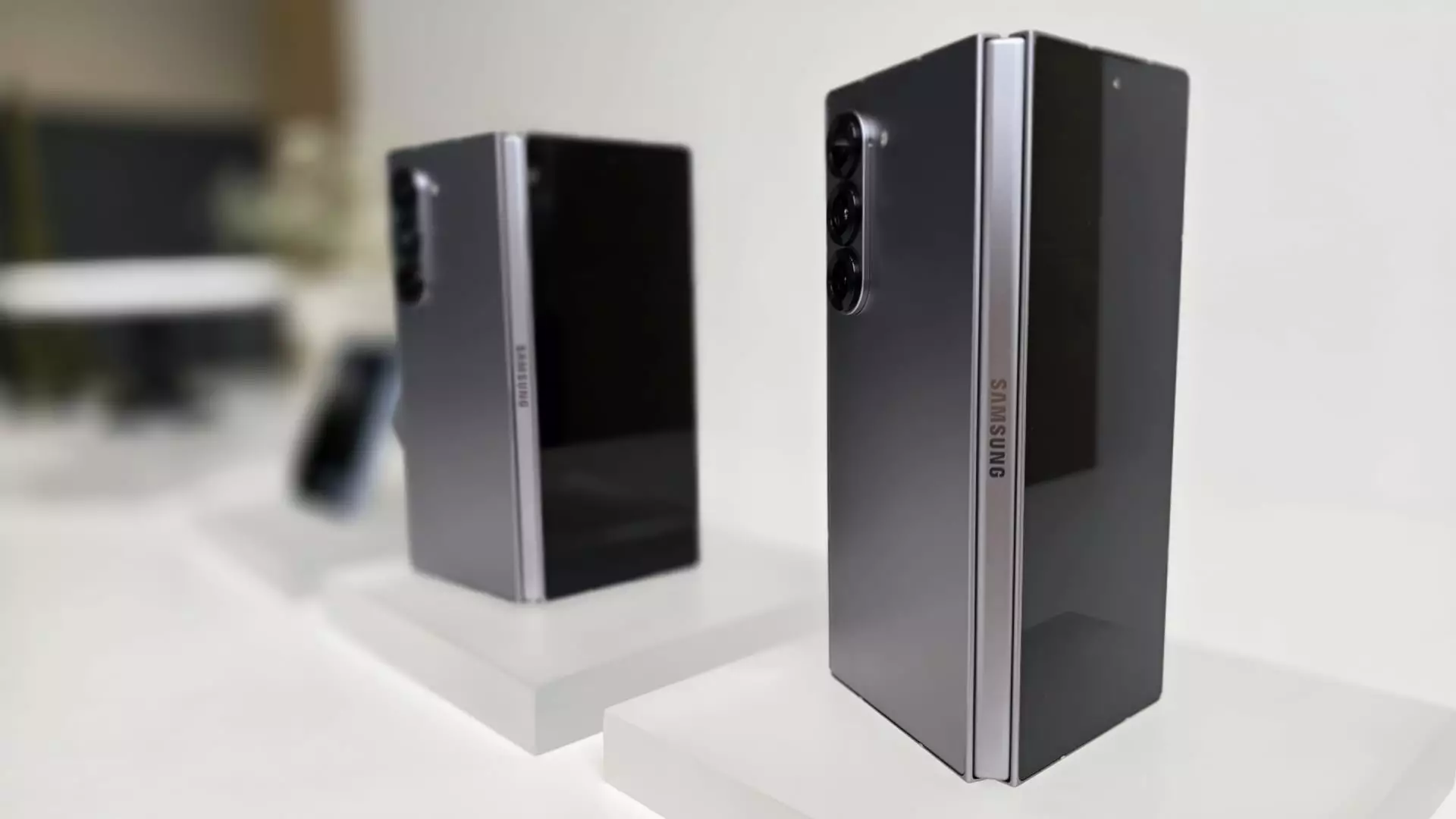In the ever-evolving landscape of mobile technology, foldable smartphones have generated considerable buzz since their introduction. Samsung pioneered this niche in 2019, offering innovative designs that provided a larger display in a portable form factor. However, the competition has intensified, particularly from savvy Chinese manufacturers like Honor and Oppo, which have made significant strides in creating more slender and lightweight devices. As Samsung prepares to unveil its latest iteration of the Galaxy Z series next month, the emphasis on slimness poses a critical question: why does thickness matter so much in a foldable device?
The Competitive Landscape
Thinness has become a pivotal selling point in the foldable market, primarily because consumers have evolved in their expectations of smartphone design. Mobile users today prefer devices that seamlessly blend style and functionality without the burden of excessive weight or bulk. Ben Wood, a prominent analyst at CCS Insight, elucidated this shift in consumer mindset, stating that the willingness to compromise on thickness for larger screen real estate is diminishing. Competitors like Honor and Oppo have cleverly used their sleek designs not just as an enhancement but as a defining feature that sets them apart from their Samsung counterpart.
Comparative analyses present an intriguing picture: the recent Galaxy Z Fold6 measures 12.1 millimeters thick when closed, weighing 239 grams, a noticeable contrast to Oppo’s Find N5, which measures 8.93 millimeters and weighs 229 grams, and Honor’s Magic V3, with a thickness of 9.2 millimeters and a weight of 226 grams. This disparity in dimensions not only highlights the architectural innovations from these rivals but also poses a challenge for Samsung. The pressure is mounting for the tech giant to deliver a foldable smartphone that not only rivals these thinner offerings but also pushes the envelope further.
Samsung’s Upcoming Launch
In anticipation of the upcoming launch, Samsung has made strategic declarations regarding its forthcoming foldable. The company promises that the newest Galaxy Z series will be the “thinnest, lightest, and most advanced foldable yet,” a statement that feeds into the competitive narrative they face against Honor and Oppo. However, achieving thinner profiles is not merely about aesthetics; it reflects a fundamental shift in engineering and material utilization. Such innovations are critical if Samsung plans to reclaim its competitive edge.
With Honor set to debut its Magic V5 shortly after Samsung’s launch, the stakes are high. If Samsung can match or even approach the thinness that Honor has achieved, it would signify a major leap forward in design philosophy. This competitive tension reinforces the industry’s dynamic nature, where a single product announcement can dramatically alter perceptions and market positions.
The Market Reality
Despite advancements in foldable technology, the segment has not lived up to the initial hype regarding market adoption. CCS Insight projects that foldables will encompass only 2% of the overall smartphone arena this year, indicating a need for a more compelling value proposition to entice buyers. While thinner devices may help in addressing some consumer hesitations, Wood warns that fundamental issues remain; many potential consumers still grapple with understanding the necessity of a folding phone in their daily lives.
Increasingly, the challenge lies in cultivating consumer intrigue and fostering a willingness to explore the functionality that foldables offer. By designing slimmer models that echo the sleek lines of traditional smartphones, manufacturers may coax users into reconsidering foldables as valid options. Yet, this is also contingent on a significant shift in consumer attitudes, requiring more than just superficial enhancements.
The Future Ahead
Interestingly, the foldable market remains small but potent enough to attract attention from other tech giants. Reports indicate that Apple, known for its conservative approach to new technologies, has plans to enter this space with a folding iPhone potentially next year. This development could further stimulate the foldable ecosystem and push existing players to innovate even more aggressively.
As this exciting chapter unfolds in smartphone technology, it’s clear that the path forward will be marked by innovation, design refinement, and a keen understanding of consumer needs. The pressure is on for Samsung to not only regain kudos for its foldable line but also to set new standards that will shape the future of smartphones. Only time will tell if the allure of thinness can truly revolutionize the foldable smartphone market.


Leave a Reply